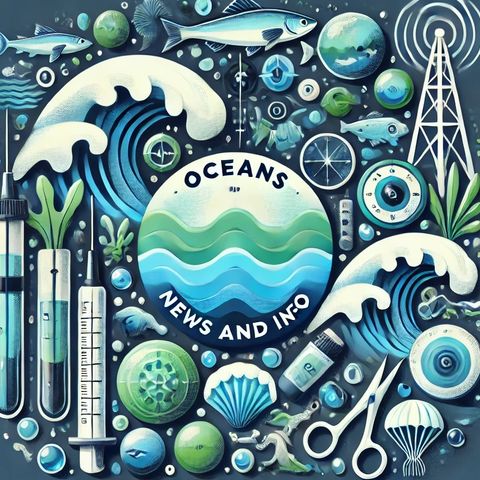"Unlocking the Depths: Photogrammetry Revolutionizes Seafloor Mapping"

Descarga y escucha en cualquier lugar
Descarga tus episodios favoritos y disfrútalos, ¡dondequiera que estés! Regístrate o inicia sesión ahora para acceder a la escucha sin conexión.
"Unlocking the Depths: Photogrammetry Revolutionizes Seafloor Mapping"
Esta transcripción es generada automáticamente. Ten en cuenta que no se garantiza una precisión absoluta.
Descripción
Underwater Photogrammetry Reaches New Depths The US Geological Survey (USGS) has made significant strides in marine science by developing a new workflow that enables the creation of detailed 3D models...
mostra másThe US Geological Survey (USGS) has made significant strides in marine science by developing a new workflow that enables the creation of detailed 3D models of the deep seafloor using archived video images. This innovative method is detailed in their recently published study, “Photogrammetry of the Deep Seafloor from Archived Unmanned Submersible Exploration Dives,” which appears in the Journal of Marine Science and Engineering.
By leveraging archived footage captured during unmanned submersible exploration dives, the USGS's photogrammetry techniques allow scientists to produce high-resolution, three-dimensional representations of underwater terrains that were previously challenging to map. This new workflow marks a pivotal advancement in underwater exploration, providing researchers with invaluable data without the need for additional costly and time-consuming dives.
The use of photogrammetry, a process that creates 3D models from two-dimensional images, is already well-established in terrestrial applications. Its adaptation for seafloor mapping promises to revolutionize our understanding of underwater environments. These 3D models enable the detailed study of geological formations, habitats, and biological communities, aiding in everything from environmental monitoring to resource management.
The implications of this research extend beyond academic curiosity. Accurate seafloor mapping is essential for a variety of practical applications, including maritime navigation safety, underwater archaeology, and the management of marine protected areas. Additionally, understanding seafloor topography is crucial for identifying ecologically significant and potentially vulnerable marine habitats.
By utilizing archived video data, this method bypasses some of the logistical and financial hurdles associated with new underwater expeditions. It opens the door for continual re-analysis of existing footage, offering a sustainable pathway for ongoing research and monitoring of the deep sea. This approach also fosters greater collaboration across institutions, as archived data can be shared and reanalyzed, bringing together a wider array of expertise and perspectives.
The development of this workflow is an example of how technological innovation can enhance our ability to study one of Earth's final frontiers. The adoption and further refinement of such methods could lead to more comprehensive and accessible seafloor maps, benefiting both scientific research and practical applications in marine industries.
As researchers continue to push the boundaries of underwater exploration, the integration of photogrammetry into deep-sea studies represents a leap forward in our capacity to understand and protect the intricate and often hidden ecosystems beneath the waves.
Información
| Autor | QP-4 |
| Organización | William Corbin |
| Página web | - |
| Etiquetas |
Copyright 2024 - Spreaker Inc. an iHeartMedia Company
